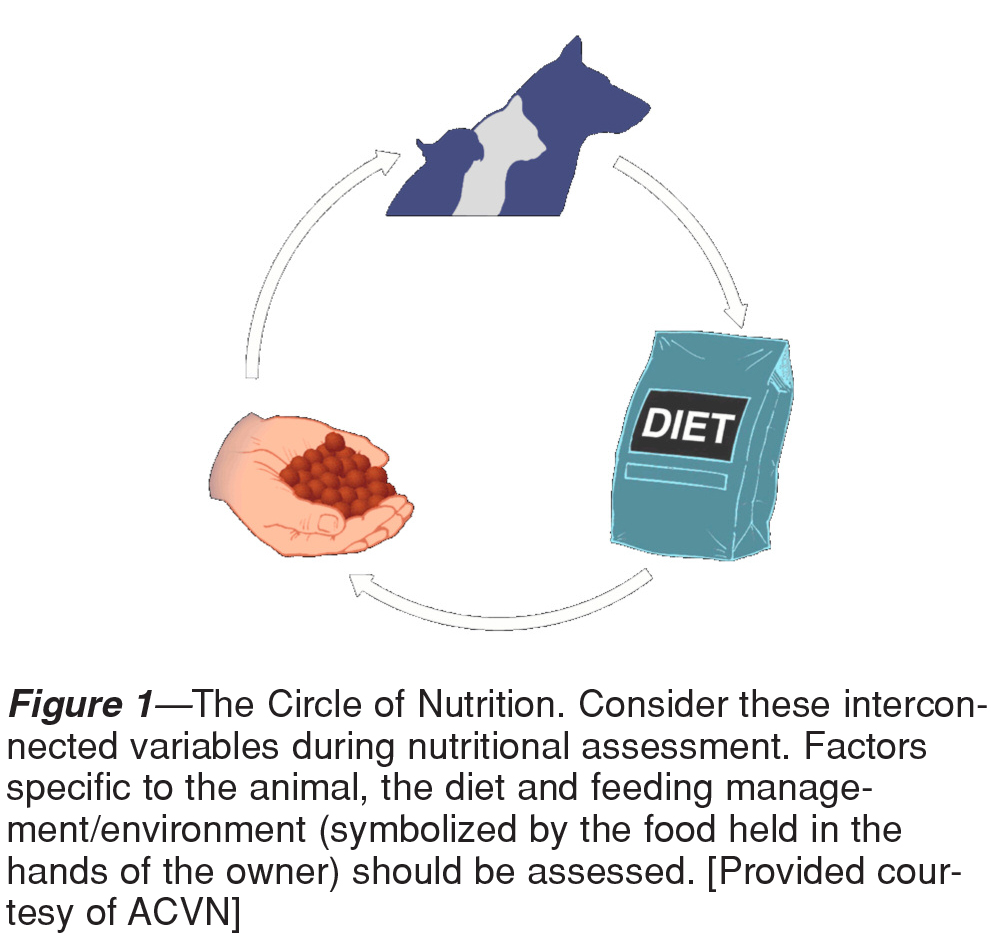2010 AAHA Nutritional Assessment Guidelines for Dogs and Cats
For a printable PDF click here.
Thanks to a generous educational grant from Hill's Pet Nutrition, the guidelines are also available in Spanish, French and Japanese.
Download PDF of Nutrition Evaluation Form [English]
Introduction
The American Animal Hospital Association recommends these nutritional assessment guidelines because good nutrition enhances pets' quality and quantity of life, and is integral to optimal animal care. Incorporating nutritional assessment into regular animal care is critical for maintaining pets' health, as well as their response to disease and injury. It requires little to no additional time or cost.
The specific goals of this article are to provide:
- Awareness of the importance of nutritional assessment of dogs and cats.
- Guidelines for nutritional evaluation of animals to promote optimal health and response to disease.
- Evidence and tools to support recommendations.
The positive impact of proper nutrition on health and disease is well established in all animals. Appropriate feeding throughout all life stages can help prevent diet-associated diseases, as well as to assist in the management of other diseases. For example, diets formulated for dogs and cats with chronic kidney disease have been shown to provide significant benefits.1,2,3
The National Research Council (NRC) of the US NationalAcademy of Sciences is the leading provider of nutrient recommendations for dogs and cats.4 The NRC publications form the basis for Association of American Feed Control Officials (AAFCO) nutrient profiles, which are updated routinely.5 AAFCO provides a mechanism for developing and implementing uniform and equitable laws, regulations, standards and enforcement policies, and establishes nutrient profiles for cat and dog foods.
Assurance of proper nutritional health, however, entails more than meeting nutrient profiles; additional factors must be considered. Figure 1 represents the "Circle of Nutrition," symbolizing the comprehensive approach to clinical nutrition used by the American College of Veterinary Nutrition (ACVN).
According to this approach, nutritional assessment considers several factors that are described in detail in this document. An iterative process, in which each factor affecting the animal's nutritional status is assessed and reassessed as often as required, provides a thorough nutritional assessment of the small animal.6,7,8 The factors to be evaluated include the animal, the diet, feeding management and environmental factors, as described below.
Animal-specific factors
Animal-specific factors include the age, physiological status and activity of the pet. Problems related to animal factors are referred to as nutrient-sensitive disorders (e.g., intolerances, allergies and organ-specific diseases). Diet choice for these animals should be restricted to those formulated to meet the disease-associated nutritional limitations of the specific animal.
 Diet-specific factors
Diet-specific factors
Diet-specific factors include the safety and appropriateness of the diet fed to the animal in question. Problems related to diet factors are referred to as diet-induced disorders (e.g., nutrient imbalances, spoilage, contamination, adulteration). Animals with these disorders may be treated by feeding a diet known to be appropriate for the animal.
Feeding management and environmental factors
Feeding factors include the frequency, timing, location and method of feeding, whereas environmental factors include space and quality of the pet's surroundings. Problems related to feeding and environmental factors are referred to as feeding-related and environment-related disorders (e.g., over- or underfeeding, excessive use of treats, poor husbandry, competitive eating in dogs, or lack of appropriate environmental stimulation). These situations require effective communications to produce the appropriate behavioral changes in the client.
AAHA welcomes the endorsement of these guidelines by the American Association of Feline Practitioners, American College of Veterinary Nutrition, the Canadian Veterinary Medical Association, and the World Small Animal Veterinary Association.






